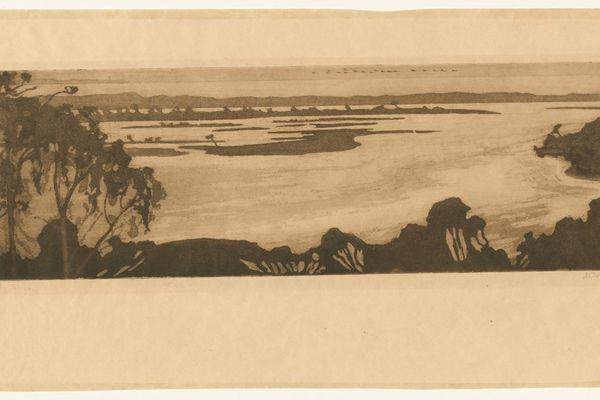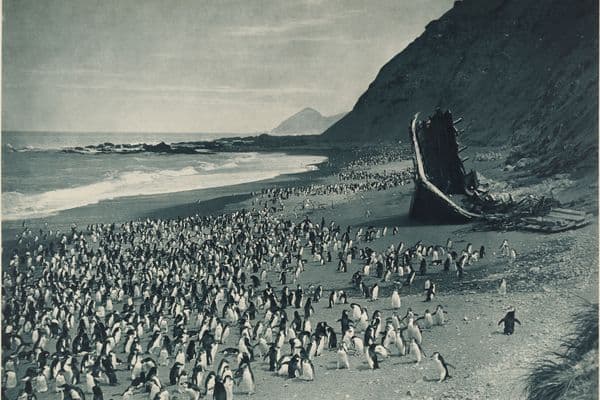Living in the 70s
Australian Photographs
13 Jun 1987 – 13 Sep 1987

Bill Henson, Untitled 1977 (Nude boy lying on a sofa) [Image Nr 9/16], 1977 prtd 1978, National Gallery of Australia, Kamberri/Canberra, Gift of the Philip Morris Arts Grant 1982.
About
The exhibition title Living in the 70s is taken from a 1974 album by the Australian band Skyhooks, one of the rock groups whose music became a vital force during the decade. Rock music played an important part in the lives of the artists whose photographic work is represented in this exhibition.
Exhibition Pamphlet Essay
The post-war baby boom children had grown up in a highly urbanized and relatively affluent society, but by the late 1960s many had come to feel that all was not well in 'the lucky country'. The single issue that brought them together was Australia's involvement in the Vietnam war, after Liberal Prime Minister Robert Menzies sent Australian troops to Vietnam in 1965.
Large-scale demonstrations in the late 1960s and early 1970s, particularly those expressing opposition to the war, marked the emergence of a strong alternative culture. This period of 'consciousness-raising' witnessed the rise of a number of movements, among them women's liberation and gay rights, Aboriginal land rights, and the anti-nuclear campaign.
The energy of the counter-culture also produced a flowering of the arts. Photography, like film and video, was one of the mediums enthusiastically adopted — it had an appropriateness and a contemporaneity which the traditional art forms of painting and sculpture appeared to lack, and it seemed free of a burdensome history. While photography could be learned relatively easily and did not necessarily require a lengthy formal training, its practice was dependent on a reasonable level of income for the purchase of equipment and materials.
Those using photography during the 1970s saw themselves first and foremost as artists. Yet they were largely unaware of any previous attempts in Australia — such as those by the Pictorialists at the turn of the century — to make photographs that were works of art. It was not until late in the decade that histories of Australian photography began to be formally constructed and that publications and exhibitions of photographs became more common.
The new-generation photographers attempted to make a living from their art, but this was invariably difficult. Then, as now, few private individuals collected photographs, and corporate and state support was limited. Some state art galleries — notably the National Gallery of Victoria and the Art Gallery of New South Wales — had begun to collect Australian photographs, but only at the Australian National Gallery was this done on an extensive scale.
The principal conduit of state support at the time was the Visual Arts Board of the Australia Council, set up in 1975 shortly before the Governor-General's dismissal of the Labor Government led by Prime Minister Gough Whitlam. The aim of the Australia Council was to promote participation in and appreciation of the arts, and many visual artists — including those working in photography — received small grants from the Visual Arts Board. Most photographers supplemented their income by other means, such as by teaching in the non-vocational photography courses that were being introduced in art schools around the country.
In the 1970s the term 'art photography' encompassed a range of approaches, the relative importance of which continues to be reassessed.
Common to all the photographs on display, however, is a delight in the wonders of the photographic medium and a faith in its power as a communicator, whether of social or personal 'truths'. Many of the images are anchored in the here-and-now of contemporary experience, and it is obvious that they have been made by city-dwellers whose reality could be found close at hand. Although some photographers continued to work in the natural landscape, the theme was not dominant during the period. When it did occur it was often as an antidote to urban life, functioning as a symbol of peace and timelessness.
The photodocumentary approach was widely used — by those with both traditional and radical concerns.
Roger Scott, who worked in a traditional manner, photographed mainly in Sydney, with the aim of making truthful records of the times. Like other photodocumentarians, Scott used established photographic conventions; he did not intervene in the event being photographed, and his subjects were generally unaware of the camera's presence. He also produced his prints with a minimum of darkroom manipulation, their rawness signifying authenticity.
Another form of expression common in the 1970s was the personal document celebrating individual experience. Gerrit Fokkema's images, for example, are exuberant declarations of the artist's place in— and perception of— the world.
Wesley Stacey's colour snapshots for The road, 1973–75, which were taken in the course of his travels around Australia in a Kombi van, delight in the visual pleasures of the Australian landscape and way of life as seen through a car window. Stacey's approach was by no means precious. He chose colour at a time when most 'serious' photographers were working in black and white, and he had his film and prints commercially processed.
Others went further afield in their quest for 'real' experience, with artists such as Max Pam and Jon Rhodes photographing extensively in South-East Asia, and particularly in India. Pam's boldly composed images are often charged with excitement and speak of his fascination with the exotic, whereas Rhodes's compelling sequences of photographs show the passage of an event unfolding in time.
Feminist artists also utilized the photodocumentary approach, working from a position of personal involvement to make what were sometimes overtly political statements.
Carol Jerrems worked in the documentary style while a student at Prahran College of Advanced Education in Melbourne. However, she extended the photodocumentary tradition by developing a non-exploitative strategy that was in keeping with the values of the counter-culture to which she belonged. From 1972 onwards, her photographic practice was based on the consent of her subjects. Hence the candidness and intimacy of her numerous single and group portraits.
Jerrems loved to take photographs and, it seems, some of her subjects loved to be photographed. Perhaps as a result of her interest in film-making, especially through her friendship with film-maker Esben Storm, she began to function as a director who collaborated with her actors to produce an event for the photograph.
One of the most successful of these collaborations was Vale Street, 1975, which looks 'natural' but is in fact a highly contrived image. The two youths — students from Jerrems's art classes at Heidelberg Technical School — are familiar players who appear in From School's out, 1975, and other photographs. The young woman, one of the artist's acquaintances and an aspiring actress at the time, can also be seen in Mozart Street.
Vale Street is an iconic image, melding contemporary and classical references. Its look of contemporaneity is heightened by details such as the tattoos and the feminist necklace. The female subject, who steps forward in the frame to confront the viewer, is bold and self-assured, the archetypal liberated woman of her era. Yet at the same time she recalls classic images of feminine beauty.
A number of other photographers were concerned with constructing positive images of people, particularly women. Christine Godden, for example, photographed her friends and their children, and was herself part of the intimacy that her images described.
Ponch Hawkes and Ruth Maddison considered specific aspects of female experience. Hawkes photographed mothers and daughters in her series Our mums and us, 1976, while in When a girl marries, 1979, Maddison looked at the wedding from a bride's point of view, beginning with the elaborate preparations involved in her dressing.
Self-portrait series, 1975, by Sue Ford, is autobiographical, as the photographs (taken by others but rephotographed by Ford) document the artist's own journey to adulthood. The series also marks the passage of time in both biological and social terms. The photographs of the female child, adolescent and adult are locked into a period indicated by hairstyle, dress and facial expression.
Straight photographic approaches other than the documentary flourished during the 1970s. They were based on a knowledge of the history of the photographic medium which, in Australia, as in Japan and Europe, came largely from the United States. American publications and exhibitions had a high profile in this country, as did visits by well-known practitioners, writers and curators. In 1974 the Director of Photography at the Museum of Modern Art in New York, John Szarkowski, came to Australia at the invitation of the newly formed Australian Centre for Photography in Sydney; and in the late 1970s American photographers Ralph Gibson, William Clift and Harry Callahan visited during exhibitions of their work at the Photographers' Gallery in Melbourne.
The straight approaches advocated by many Americans were already in evidence in Australia. Grant Mudford's early work has a surreal edge enhanced by a dark, brooding printing style, but his photographs from the mid-1970s onwards (many of which were produced in California where he lived) are rigorously formal. Tightly composed, Mudford's images are emphatically photographic in terms of detail and surface.
In Melbourne, the American West Coast fine print tradition found expression in the work of Ian Lobb and Les Walkling. Both artists used large-format cameras and were concerned with the production of beautifully crafted prints as metaphors for psychological and spiritual states. Both worked in the landscape, but Walkling also constructed still-life images.
Other artists of the 1970s moved away from straight photographic techniques, manipulating their photographs and experimenting with new ways of presenting their images.
Micky Allan, who was trained as a painter, drew and painted on the surfaces of her photographs, a practice employed by other women artists at the time. In her photographic series, Allan explored the processes of ageing and the various stages of social development.
Warren Breninger's vision, by contrast, is highly symbolic. A practising Christian, Breninger obsessively repeated the image of a desirable young woman in his series Expulsion of Eve, 1978. Eve assumed many guises as the artist worked and reworked his negative, combining photographic and printmaking processes.
Untitled 1977, a series by Bill Henson, has a characteristic ambiguity. The young male nude, described in sensuous, soft-focus images, is an object of desire but also — perhaps — a victim. His emaciated appearance recalls photographs of victims of Nazi concentration camps.
The photographs on display represent a small sampling of the work produced during the 1970s. Confident and diverse, they point to the healthy heterogeneity of the period.
Helen Ennis
Curator of Photography
* Excluded for reasons of space are photodocumentation of performance events, and large-scale installations by Virginia Coventry, Jon Rhodes and others.











